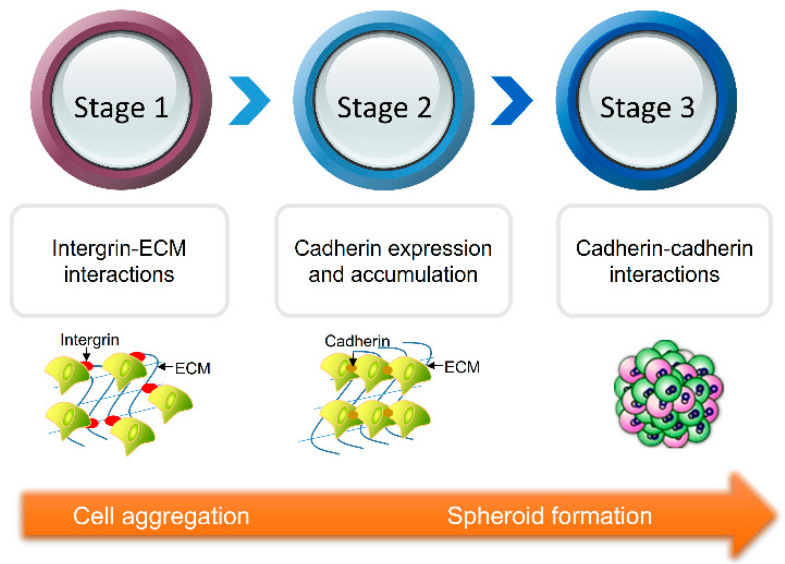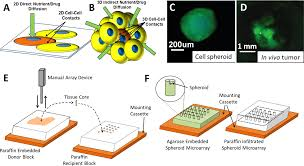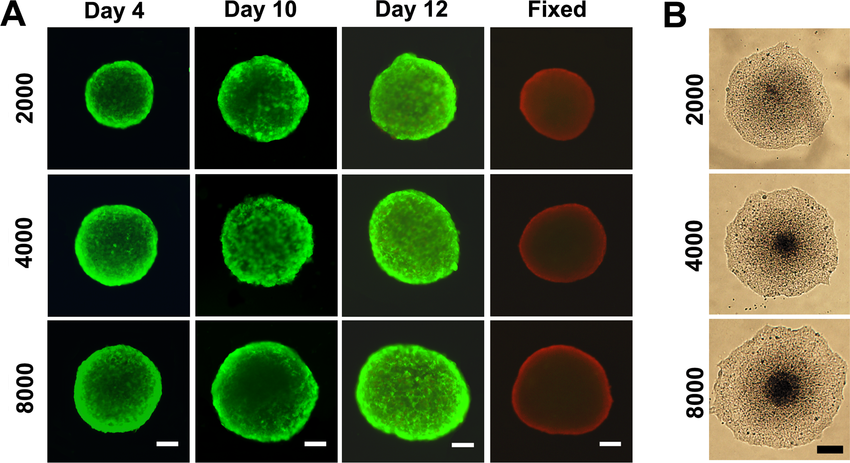Necrosis and its formation in a spheroid
The term necrosis refers to cell or tissue death and is typically caused by factors such as injury, infection, or inadequate blood supply. Necrosis can also form within a spheroid, which is a 3D culture of cells. Here are a few
Challenges in spheroid research
Spheroids have gained significant popularity in cancer research because of their more physiological relevance for studying tumor biology compared to traditional two-dimensional cell culture systems. However, several issues are associated with using multicellular spheroids in cancer research. This article is an
How to Generate Multicellular Spheroids
Since the introduction of monolayer cell cultures, cell culture methods have advanced exponentially in the past decade, moving from traditional 2D cell culture methods to 3D cultures. While 2D cultures are simple and allows for cell proliferation and differentiation, they
Spheroids embedded in collagen for cancer research
Collagen is the most prevalent embedding material as it has both the components of the extra cellular matrix and is upregulated within a tumor microenvironment. It is further preferred due to its mechanical strength, pore size and fibril fraction by
Spheroid Culture Methods to Study Pancreatic Cancer Cell Lines (pNEN)
Pancreatic neuroendocrine neoplasms (pNEN) comprise of a group of rare tumours that originates from the islets of langerhans (1). Diagnosis of pNEN is often complicated by hormone hyper secretion that culminates in early clinical manifestations. 85% of patients do not
Spheroid cancer models to study drug efficacy
Spheroids formed within cancer cell lines mimic architecture and share the limited drug penetration properties since drugs are largely confined to outer cell layers. Spheroids, three dimensional architectures of cancer cells, are found in cancer patients with sizes of 250~
Three-dimensional self-assembling spheroid cultures: Human Neonatal keratinocytes
Spheroids are three-dimensional (3D) cell aggregates that can mimic tissues and mimic tumors. In recent years, there has been significant progress in development of in vitro aggregates. Epidermal spheroids provide a more representative view of the human skin than 2D
Three-dimensional skin spheroid cultures
Three-dimensional culture system provides unique platforms to study complex biological processes in vitro, particularly cell proliferation, differentiation, motility, and stress responses. While 3D spheroid cultivation methods are well established in certain tissue types such as mammary and colorectal epithelial cells,
Analysing Drug Response in 3D Spheroid Culture Models
Spheroid models used in drug screens offer the benefit of a physiologically relevant biological model to allow for screening of cancer killing therapeutics or drugs toxicity to host cells. Spheroid culture systems are easy to use, modifiable, adaptable to standards
SELF-ASEMBLING 3D SPHEROID CULTURES
Three-dimensional cultures provide unique platform to study complex biological processes in vitro mainly cell proliferation, differentiation, motility, and stress. However, 3D spheroid culture methods are well established in certain tissue types, it is still challenging to cultivate 3D spheroids from











